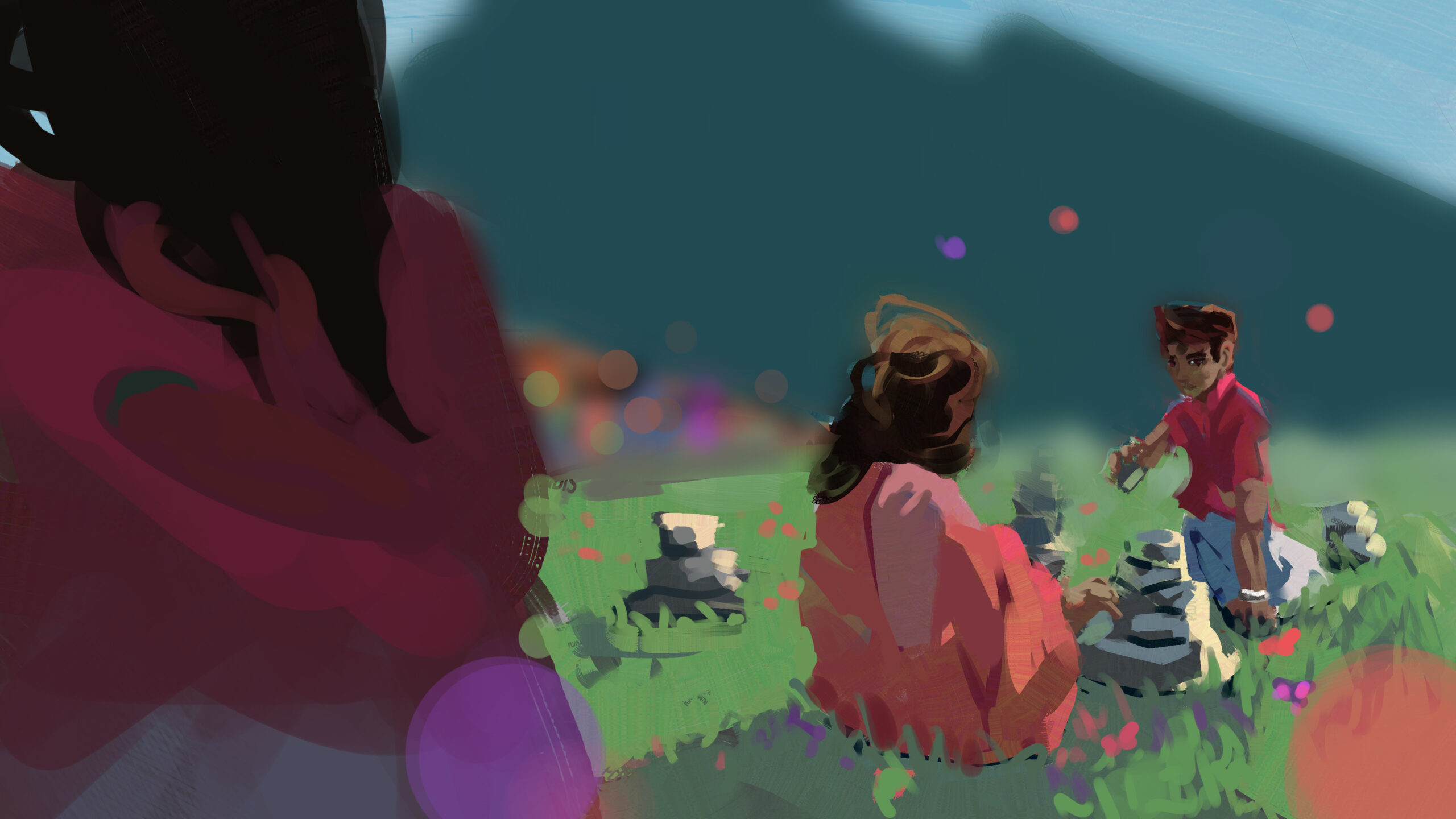The religious season began with pilgrims rushing up the slant of the hill with necklaces of flowers and jingling bangles; brushing shoulders, blaring songs, muttering prayers. Sweat dripped down their pierced noses as cool mountain rocks turned into stairs, unfenced from the fall. Five died last monsoon, though “it wasn’t our fault” the government says and it is courtesy to believe them. It was this same reckless devotion that propelled these hundred thousand pilgrims up the stairs to the kingdom of heaven.
The old with their frail arms gripped wooden hiking sticks bought for 10 rupees; a small sacrifice paid every year so they could follow the free-handed youth. Their feet boiled from wear, while the youth wore their branded shoes; their hair a tender white while the children wore a brutish black. They knew of the competition over the small stretch of path that slithered up the hill; packed by the bodies, competing neck, foot and breath.
By midday the tired families peeled off into corners, hunger famishing their lips, eating premade lunches and soups sold by vendors who had painstakingly hauled produce up the hill. The quick had already reached the charity stalls at the top of the mountain; there, hot food is always available, brought up early in the morning before the believers are allowed up. Others had gone searching beyond the forested borders, winding up and around the valley where the little stone shrines encircle the temples sheltering divine statuettes dotted like umbrellas across the path
They were on the search for flat stones, ones that could balance on top of each other. Here, they explored the rocky shoals of a dried-up river bed where the jetties of sand gave way to piercing hot pebbles. It took some digging, they had to be quick or else they’d be late.
The elderly don’t partake. After all they were too old to believe in such things – too old to lay down another ‘stone shrine’, too old to remain still. They wanted to rest, without the thistles of meaning in every imagination, without ghostly figures stacking rocks in their mind.
Assembling was a careful practice: big, flat stones steadily balanced onto the ground, with smaller stones on top. The steadiest structures could last for years, they were told; and so they perfected each imbalance, each failure quickly shifted and remade.
Making a ‘stone shrine’ they were told would guarantee prosperity. As long as it stayed standing, their wells would be deep, their crops full and ripe, their houses sturdy. But the stack never lasted much longer than the short time they were attended to. It was a bribe. Their effort under the fragile canopy to make a stone shrine, was a bribe to make their pleas come true.
Then the believers continued up the hill, into the midday sun. Sweat-drenched, pilgrims to salvation. It happened every monsoon–the prospect of the ripening full moon. Spirituality was an advertised reward too great to pass up for beggars and the rich alike. This was when the 10-rupee-stick crowds gushed out of every entrance— congregating, compressing. Every person pushed and scattered, breaking carefully placed stone shrines in the unending race to the top of the sacred mountain.
Writer – Haran Thirumeni
Editor – Jessica Dai
Artist – Daniel Wang
–April 2025–


Leave a Reply